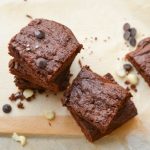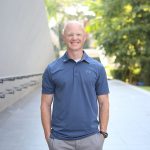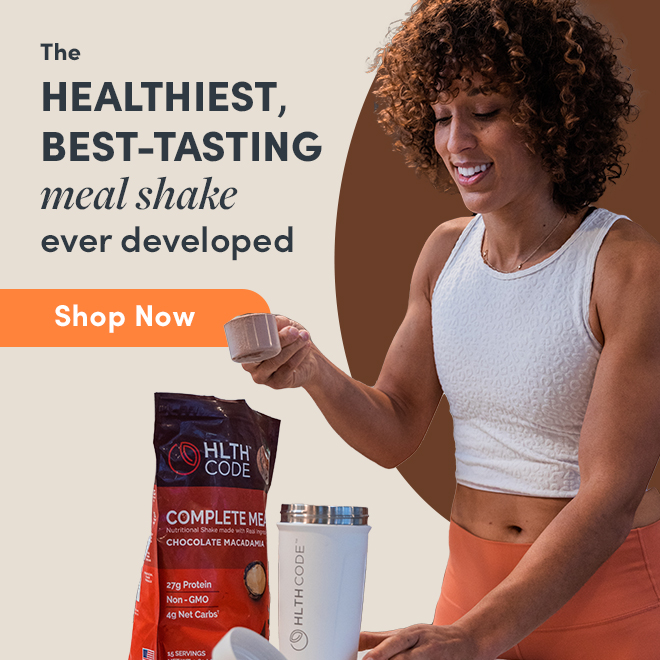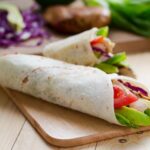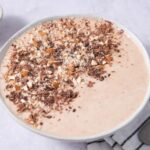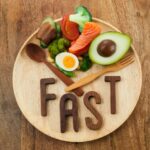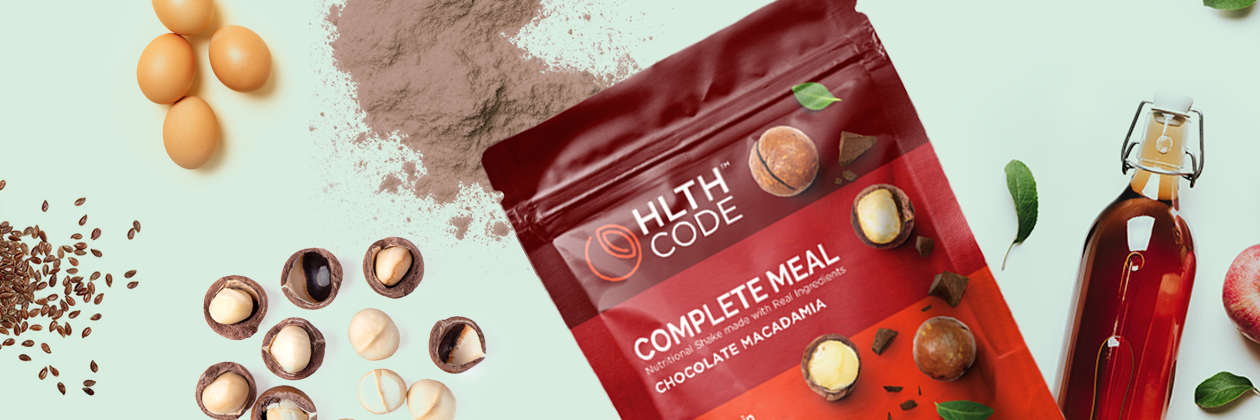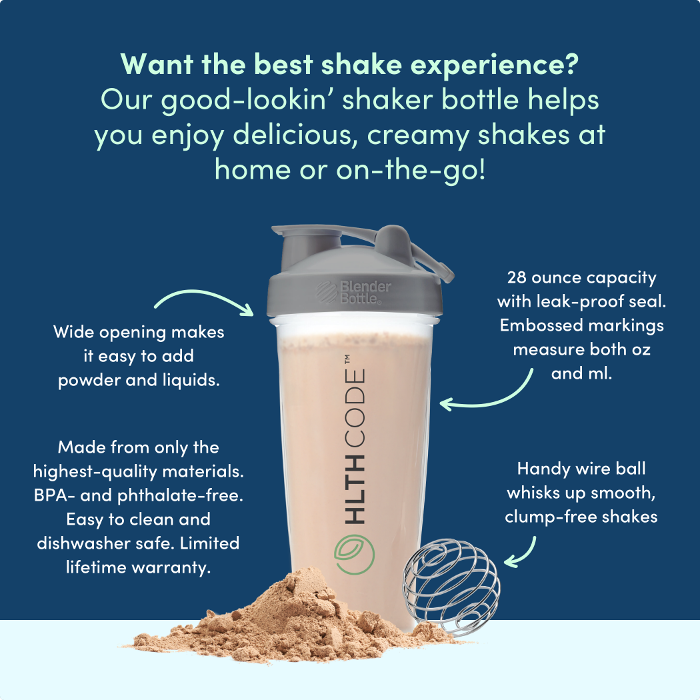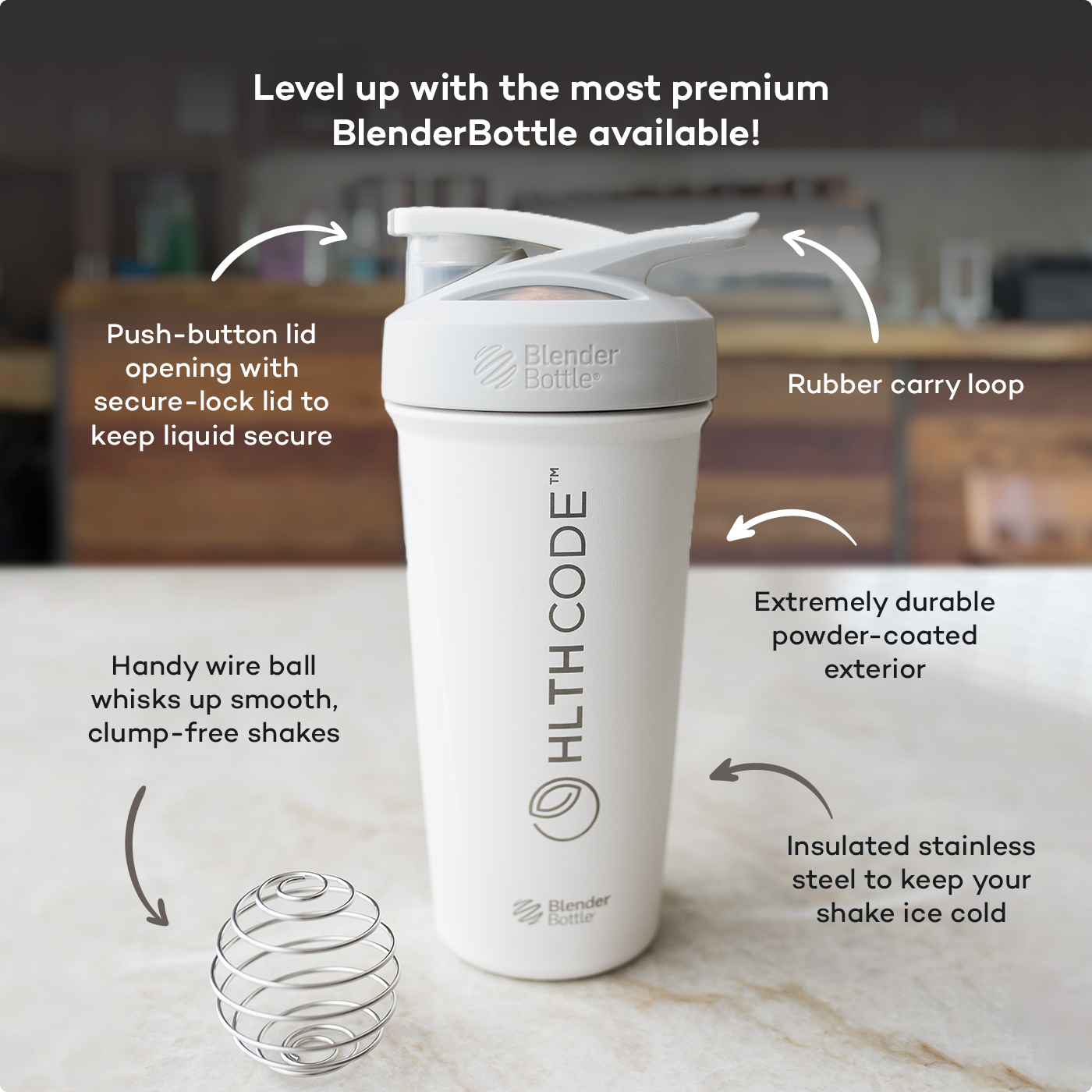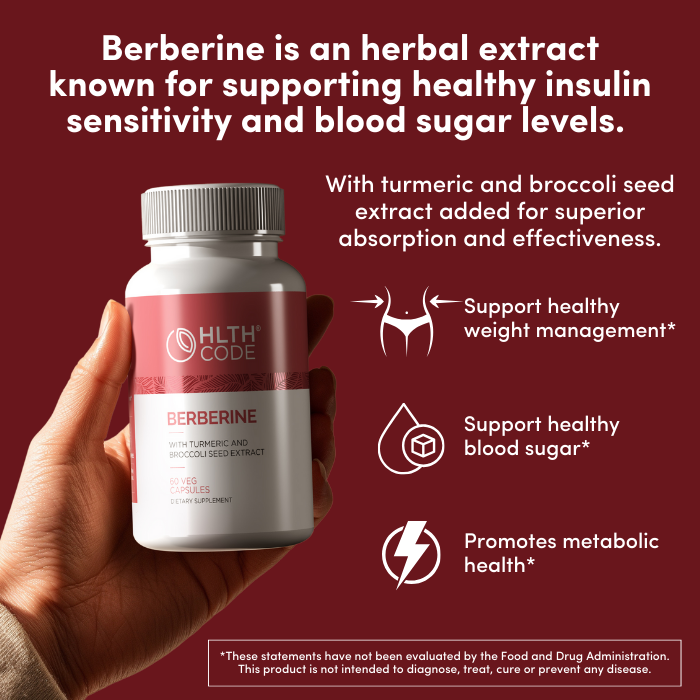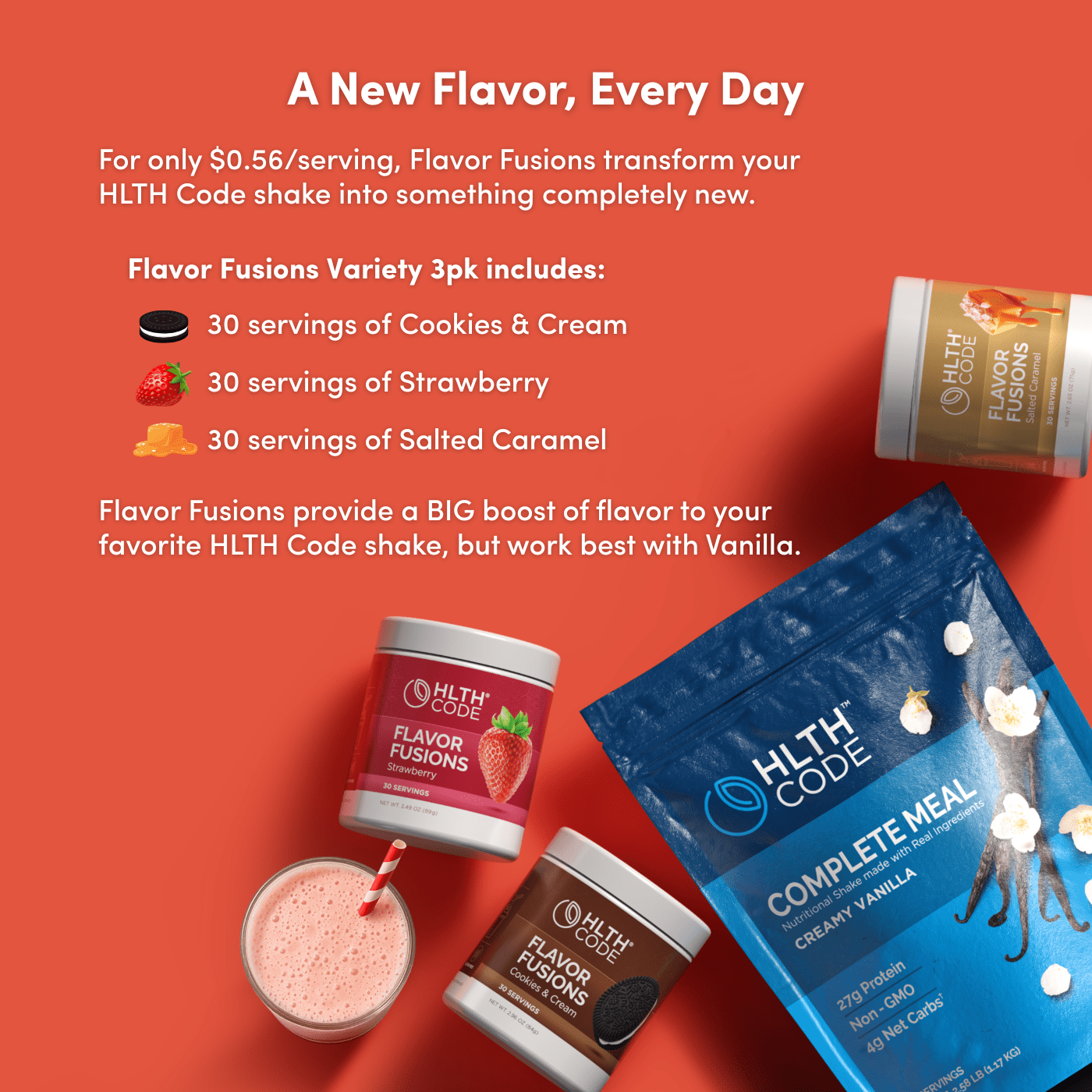Think You’ve Peaked? Might Be Time for a Comeback
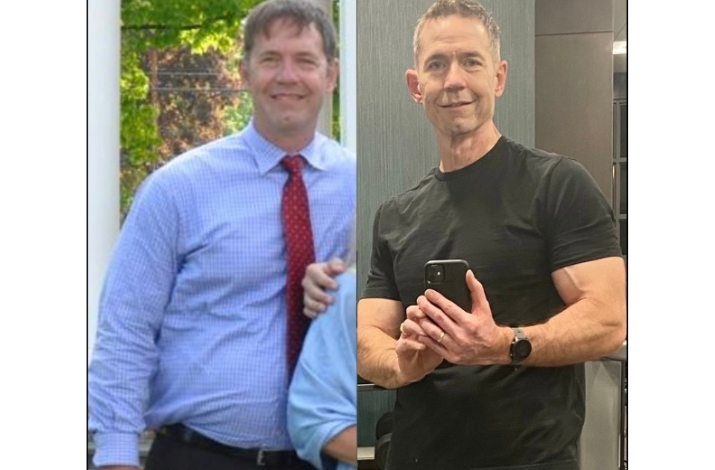
At 60 years old, I’m stronger than I’ve ever been.
I’m training to run a mile while carrying a 53-pound kettlebell like a suitcase (see Andrew Huberman’s recent podcast with Pavel Tsatsouline). I recently hit personal bests on the bench press, dips, and pull-ups. I’m preparing for my next half marathon. And my first meal every single morning is the same meal replacement shake.
But let’s rewind the tape, because none of this would have made sense to my 50-year-old self.
Back then, I was 278 pounds. I was out of shape. And I was stuck in a loop I couldn’t escape.
Decades of Doing It “Right”—And Getting It Wrong
I’ve spent most of my adult life trying to lose weight. And if you looked at what I was doing on paper, it looked solid: I was focused on eating less, exercising more, counting calories, and doing exactly what most experts recommended.
And it worked… kind of.
I lost 10 pounds. Then 20. On one occasion, I even dropped 55 pounds and got all the way to my goal weight.
But every time I “succeeded,” I felt worse than before.
I was fatigued. Cold. Ravaged by cravings. Losing strength. Losing muscle. And within weeks, the weight started to come back—with interest.
The worst part? I blamed myself. I thought I lacked discipline. I thought this was just how my body worked.
By the time I hit 278 pounds at age 51, I had nearly given up on the idea of ever finding a sustainable, healthy path forward.
The Book That Changed My Perspective
In January 2018, I asked a doctor friend for help. He suggested I read Why We Get Fat by Gary Taubes. That book opened my eyes.
It introduced me to a different way of thinking—one that challenged everything I thought I knew about nutrition and metabolism. I started a low-carb, high-protein, whole-food diet with healthy fats. I gave myself permission to stop starving and start fueling.
It changed everything.
I didn’t just lose weight—I lost over 80 pounds and kept it off. I stopped counting calories and started tracking progress that actually mattered: strength, energy, endurance, satiety. I began running. I started lifting consistently. I ran my first half marathon at 58. Six months later, I ran my first full marathon.
I had turned a corner. At 59, I was as strong and fit as I’d ever been.
From Personal Transformation to Helping Others
That transformation didn’t just change my body—it changed the course of my life. It inspired me to dig deeper into the science, to keep learning, and eventually to help others do the same.
I earned my certification as a Primal Health Coach and later completed the Master Coach track. I also became an accredited Metabolic Health Practitioner through the Society of Metabolic Health Practitioners. Today, I’m a health coach with the Ovadia Heart Health telemedicine practice, where I help people just like I once was—overwhelmed, stuck, and looking for a better way forward.
But my own story didn’t end there.
Then Came the Plateau (and the Big Question)
Eventually, I hit a wall. My strength gains slowed. My performance stabilized. I still felt good—but the fire wasn’t there the way it used to be.
Part of me thought: Maybe this is just what happens as one approaches 60.. Maybe this is as strong as I’ll ever be again. And maybe that’s okay.
But another part of me—the part that had already proven “maybe” wrong so many times—wasn’t quite ready to settle.
I started wondering: Is there more left in the tank? Am I leaving potential on the table?
That mindset—one of experimentation and curiosity—is what really changed everything.
What If There’s a Better Way?
After five years of time-restricted eating, I had grown used to fasting until 1:00 p.m. and eating two large meals to hit my daily protein target—roughly 200 grams. It was a system that had served me well.
But as I hit a plateau, I started reading more about protein distribution and muscle protein synthesis—and a question started forming:
Was I missing something by cramming all my protein into a relatively narrow window?
That curiosity led me to test a new hypothesis:
What would happen if I spread my protein out over three meals instead of two? What if I broke my fast earlier in the day with a high-protein meal?
So I tried it.
I started drinking a shake around 10:30 a.m.—initially just protein, no fat or carbs. But as I continued researching optimal nutrient timing, I realized that a more balanced macronutrient profile might offer even better results.
That’s when I revisited something I had only used occasionally while traveling: HLTH Code—a delicious shake formulated with a 1:1 ratio of protein to healthy fat, designed to mimic the macronutrient balance of metabolically complete foods like eggs and beef.
Until that point, I hadn’t considered it for daily use.
But I decided to give it a shot.
May 5, 2024: The Experiment Begins
That’s when I began taking HLTH Code every morning at 10:30 a.m.—after more than five years of fasting through that window. I started with a serving and a half, then shortly after bumped it to two full servings which provided me with:
- 800 calories
- 54 grams of protein
- 54 grams of healthy fats
- 8 net carbs
I’ll be honest—I was a little concerned. Adding an 800-calorie meal to a part of the day when I’d previously eaten nothing felt like a gamble. Would I gain weight? Would I lose some of the progress I’d fought so hard for?
But what happened surprised me:
I felt better. More energy. More satiety. Better workouts. Less afternoon brain fog. And something even more surprising—strength gains.
Within weeks, I was breaking through plateaus I’d quietly assumed were age-related ceilings. Within months, I was hitting lifetime PRs in the gym.
320 Days Later: Here’s What I Know
I’m still going strong. I’ve now had HLTH Code every morning for 320 days straight, and here’s what’s happened:
- I recently bench-pressed 250 pounds for 8 reps
- I hit 31 full-body dips with clean form
- I tied my personal record of 12 pull-ups with full range of motion
- My VO2 max is up 4 points since last May
- My weight is exactly what it was when I started
- My energy, focus, and recovery are all better
The consistency of this shake has allowed me to train harder and recover faster. I’m currently preparing to bench 300 pounds by my 61st birthday, complete the Kettlebell Mile, and run my next half marathon.
But this article isn’t about numbers. It’s about mindset.
The Bigger Shift
This wasn’t about a shake. It was about questioning the assumptions that were quietly holding me back.
That’s the real takeaway.
I see it all the time now—people in their 40s, 50s, and 60s who assume they’ve peaked. That it’s all downhill from here. That the best we can hope for is to maintain what we’ve got and try not to lose too much.
But what if we’re wrong?
What if most of us are leaving huge amounts of potential on the table—not because we’re lazy or undisciplined, but because we’ve been misinformed?
What if there’s still another gear you haven’t hit yet?
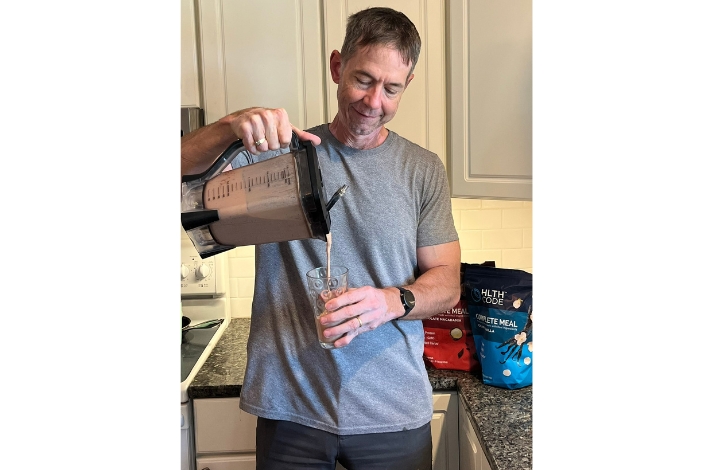
HLTH Code: Just One Tool (But a Good One)
Let me be clear: HLTH Code didn’t create this progress. But it’s been a powerful tool—one that I’ve used every day for almost a year.
I have no affiliate link. I don’t earn money if you buy it. I’ve received complimentary product, and I was in a national commercial (unpaid, other than the product I was already using). That’s it.
I’m not here to sell anything.
But I am here to say this: the experiment worked. The results speak for themselves. And if you’re looking for a consistent, nutrient-dense, convenient option to support your goals, this might be worth trying.
At the very least, it’s worth being curious.
You Don’t Need to Be Perfect—Just Curious
If you’ve followed me on X (@BiggestComeback), you know this has always been my message.
I don’t give advice. I don’t tell people what to do. I just share what’s worked for me and invite people to run their own experiments.
And over time, that’s led to more than 55,000 people following along—not because I have the answers, but because I keep asking the questions.
- What’s possible if you stop focusing on restriction and start focusing on nourishment?
- What happens when you chase strength instead of focusing on the scale?
- What do you discover when you test your assumptions—at any age?
One Last Thing
If you’re reading this thinking, “Yeah, but I’m not training for a marathon or chasing a 300-pound bench press,”
I get it. But that’s not the point. This isn’t about numbers or PRs—it’s about potential.
And what I’ve discovered, over and over again, is that most of us are capable of far more than we realize.
If you’ve felt stuck, frustrated, or convinced that your best years are behind you, maybe it’s time to try something different. Not a full overhaul—just one small change. One new habit. One experiment.
You might be surprised by what it unlocks.
I know I was.
This article is for informational and educational purposes only. It is not, nor is it intended to be substitute for professional medical advice, diagnosis, or treatment and should never be relied upon for specific medical advice.




